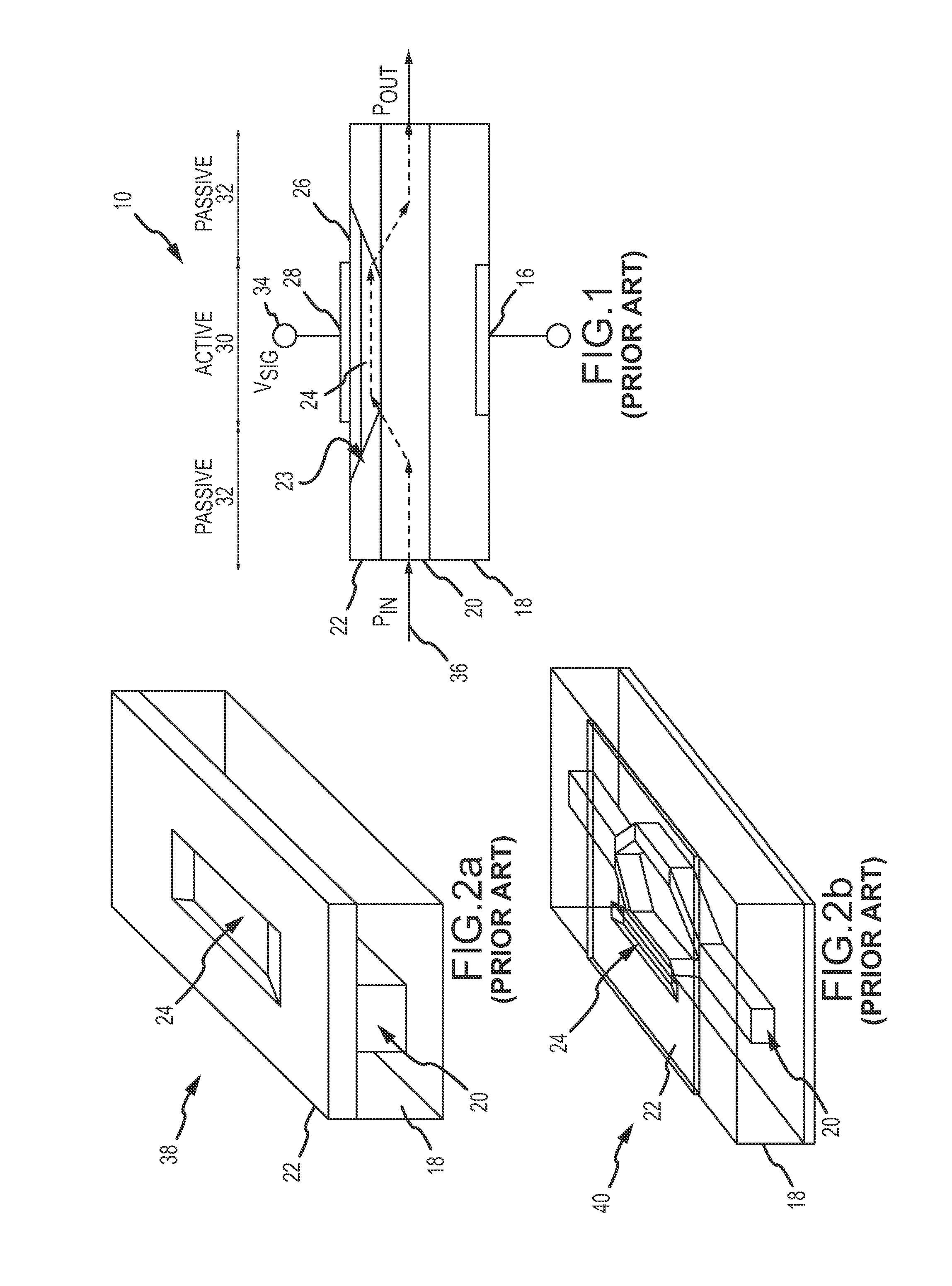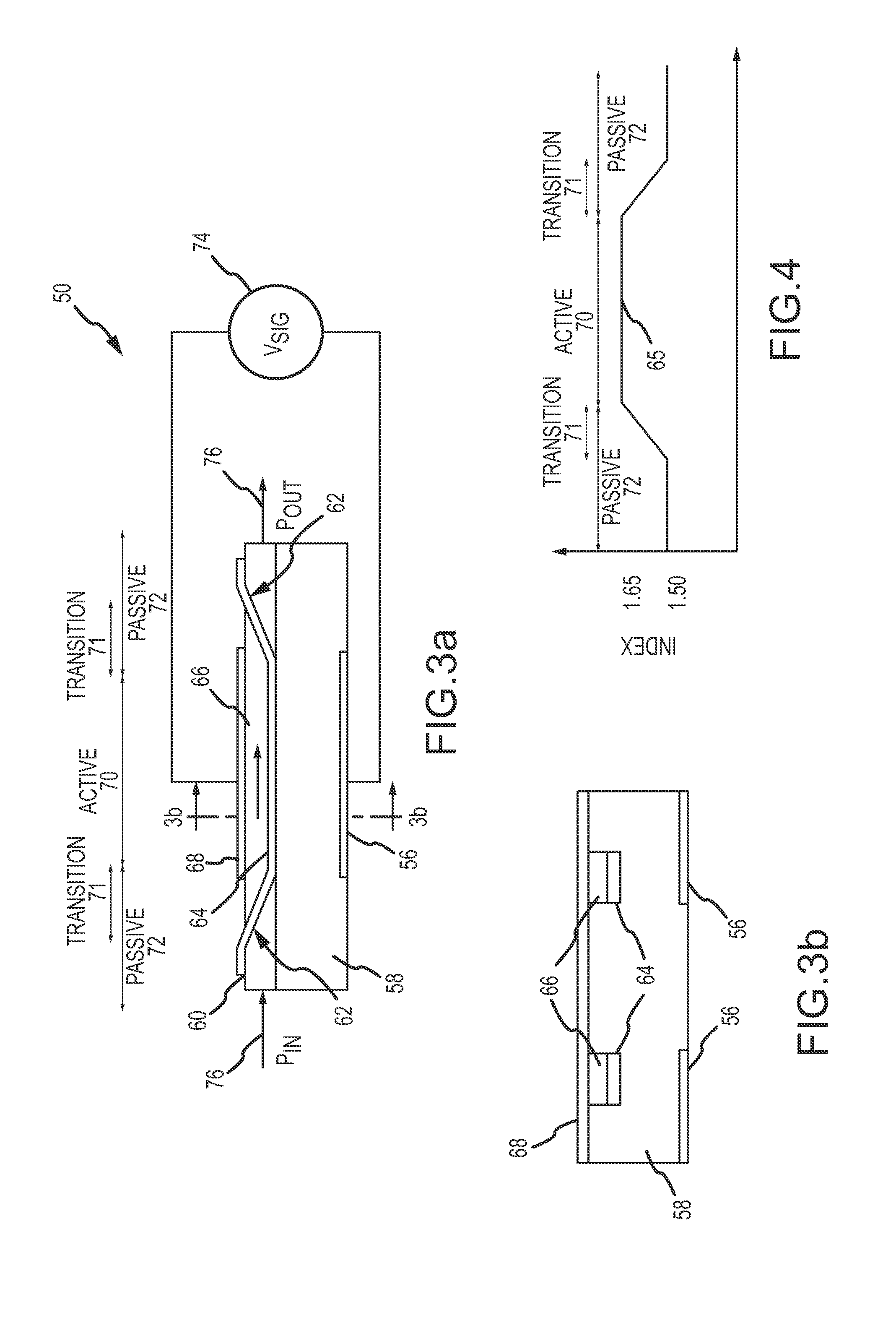Hybrid strip-loaded electro-optic polymer/sol-gel modulator
a polymer and hybrid technology, applied in the field of hybrid eo polymer/solgel modulator, to achieve the effect of improving extinction and reducing insertion loss
- Summary
- Abstract
- Description
- Claims
- Application Information
AI Technical Summary
Benefits of technology
Problems solved by technology
Method used
Image
Examples
Embodiment Construction
[0041]The present invention describes hybrid EO polymer / sol-gel modulators with higher electric field / optical field overlap factor Γ and smaller inter-electrode separation d to reduce the modulator's half-wave voltage Vπ, reduce insertion loss and improve extinction. Applications for these new designs include but are not limited to high speed analog modulators for cable TV, phased array radars, photonic analog-to-digital converts, RF photonics, fiber optic gyroscopes and true time delay lines as well as digital modulators for optical communications networks ranging from long haul dense wavelength division multiplexing (DWDM) networks, to metropolitan area DWDM, to passive optical networks (PON) for optical access.
[0042]The conventional design of the hybrid EO polymer / sol-gel modulator as illustrated in FIG. 1 suffers from several limitations owing principally to the fact that the design employs a sol-gel core waveguide that lies directly below the active EO polymer waveguide—this ha...
PUM
| Property | Measurement | Unit |
|---|---|---|
| insertion loss | aaaaa | aaaaa |
| wavelength region | aaaaa | aaaaa |
| wavelength region | aaaaa | aaaaa |
Abstract
Description
Claims
Application Information
 Login to View More
Login to View More - R&D
- Intellectual Property
- Life Sciences
- Materials
- Tech Scout
- Unparalleled Data Quality
- Higher Quality Content
- 60% Fewer Hallucinations
Browse by: Latest US Patents, China's latest patents, Technical Efficacy Thesaurus, Application Domain, Technology Topic, Popular Technical Reports.
© 2025 PatSnap. All rights reserved.Legal|Privacy policy|Modern Slavery Act Transparency Statement|Sitemap|About US| Contact US: help@patsnap.com



